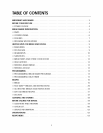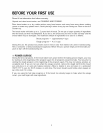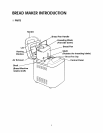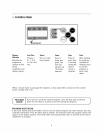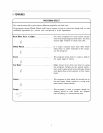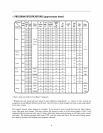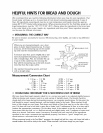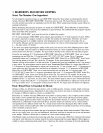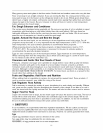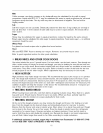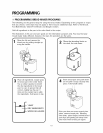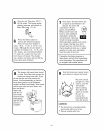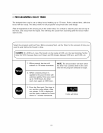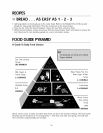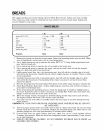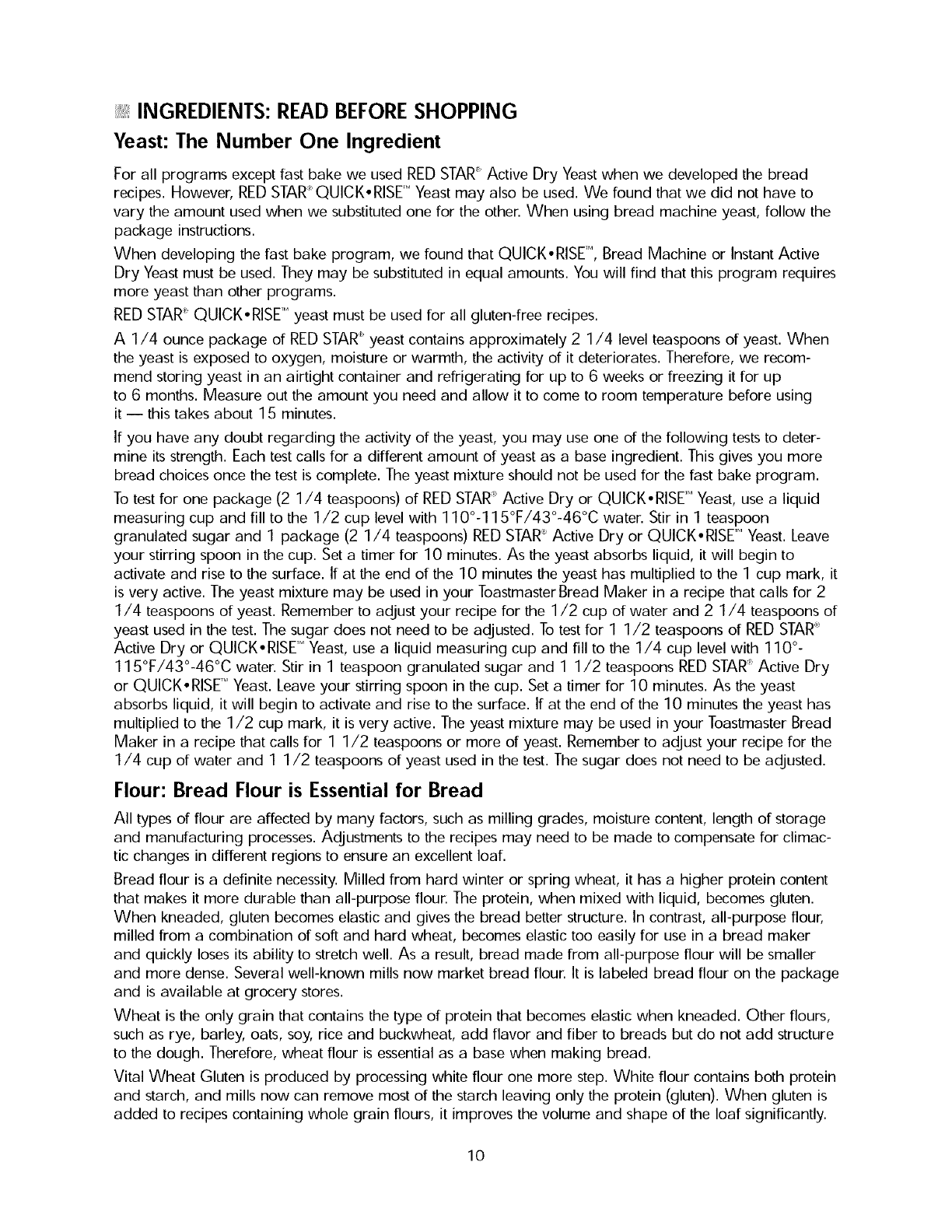
INGREDIENTS: READ BEFORESHOPPING
Yeast: The Number One Ingredient
For all programs except fast bake we used RED STAR_ Active Dry Yeast when we developed the bread
recipes. However, RED STAR QUICK.RISE 'MYeast may also be used. We found that we did not have to
vary the amount used when we substituted one for the other. When using bread machine yeast, follow the
package instructions.
When developing the fast bake program, we found that QUICK.RISE 'M,Bread Machine or Instant Active
Dry Yeast must be used. They may be substituted in equal amounts. You will find that this program requires
more yeast than other programs.
RED STAR QUICKoRISE TMyeast must be used for all gluten-free recipes.
A 1/4 ounce package of RED STAR yeast contains approximately 2 1/4 level teaspoons of yeast. When
the yeast is exposed to oxygen, moisture or warmth, the activity of it deteriorates. Therefore, we recom-
mend storing yeast in an airtight container and refrigerating for up to 6 weeks or freezing it for up
to 6 months. Measure out the amount you need and allow it to come to room temperature before using
it -- this takes about 15 minutes.
If you have any doubt regarding the activity of the yeast, you may use one of the following tests to deter-
mine its strength. Each test calls for a different amount of yeast as a base ingredient. This gives you more
bread choices once the test is complete. The yeast mixture should not be used for the fast bake program.
To test for one package (2 1/4 teaspoons) of RED STAR' Active Dry or QUICK°RISE 'MYeast, use a liquid
measuring cup and fill to the 1/2 cup level with 110°-115°F/43°-46°C water. Stir in 1 teaspoon
granulated sugar and 1 package (2 1/4 teaspoons) RED STAR Active Dry or QUICKoRISE TMYeast. Leave
your stirring spoon in the cup. Set a timer for 10 minutes. As the yeast absorbs liquid, it will begin to
activate and rise to the surface. If at the end of the 10 minutes the yeast has multiplied to the 1 cup mark, it
is very active. The yeast mixture may be used in your Toastmaster Bread Maker in a recipe that calls for 2
1/4 teaspoons of yeast. Remember to adjust your recipe for the 1/2 cup of water and 2 1/4 teaspoons of
yeast used in the test. The sugar does not need to be adjusted. To test for 1 1/2 teaspoons of RED STAR
Active Dry or QUICKoRISE 'MYeast, use a liquid measuring cup and fill to the 1/4 cup level with 110 °.
115°F/43°-46°C water. Stir in 1 teaspoon granulated sugar and 1 1/2 teaspoons RED STAR Active Dry
or QUICK°RISE T"Yeast. Leave your stirring spoon in the cup. Set a timer for 10 minutes. As the yeast
absorbs liquid, it will begin to activate and rise to the surface. If at the end of the 10 minutes the yeast has
multiplied to the 1/2 cup mark, it is very active. The yeast mixture may be used in your Toastmaster Bread
Maker in a recipe that calls for 1 1/2 teaspoons or more of yeast. Remember to adjust your recipe for the
1/4 cup of water and 1 1/2 teaspoons of yeast used in the test. The sugar does not need to be adjusted.
Flour: Bread Flour is Essential for Bread
All types of flour are affected by many factors, such as milling grades, moisture content, length of storage
and manufacturing processes. AdJustments to the recipes may need to be made to compensate for climac-
tic changes in different regions to ensure an excellent loaf.
Bread flour is a definite necessity. Milled from hard winter or spring wheat, it has a higher protein content
that makes it more durable than all-purpose flour. The protein, when mixed with liquid, becomes gluten.
When kneaded, gluten becomes elastic and gives the bread better structure. In contrast, all-purpose flour,
milled from a combination of soft and hard wheat, becomes elastic too easily for use in a bread maker
and quickly loses its ability to stretch well. As a result, bread made from all-purpose flour will be smaller
and more dense. Several well-known mills now market bread flour. It is labeled bread flour on the package
and is available at grocery stores.
Wheat is the only grain that contains the type of protein that becomes elastic when kneaded. Other flours,
such as rye, barley, oats, soy, rice and buckwheat, add flavor and fiber to breads but do not add structure
to the dough. Therefore, wheat flour is essential as a base when making bread.
Vital Wheat Gluten is produced by processing white flour one more step. White flour contains both protein
and starch, and mills now can remove most of the starch leaving only the protein (gluten). When gluten is
added to recipes containing whole grain flours, it improves the volume and shape of the loaf significantly.
10



